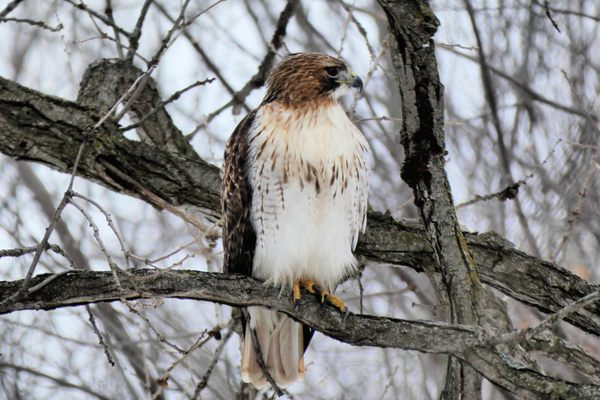Bath Road Heronry
Beside a busy highway, a colony of Great Blue Herons raises hundreds of offspring each year.
Every year around Valentine’s Day, hundreds of great blue herons (Ardea herodias) descend upon the Cuyahoga Valley National Park in Northeast Ohio to engage in their annual courtship and mating rituals. The birds build their nests in communal rookeries called heronries. Heronries typically appear in secluded areas, and the birds are ordinarily cautious and skittish. They’re usually surrounded by marshland, and observable only by the most intrepid birdwatchers. The Bath Road Heronry is unusual because of its proximity to the busy highway between Riverview and Akron-Penninsula Roads. It affords people a rare opportunity to see an active heron rookery without trudging through miles of wetlands. Because the road is so heavily traveled, there’s a pull-off to prevent vehicles from obstructing traffic while birders view and photograph the nests and their occupants.
Blue herons were first observed nesting in the Cuyahoga Valley National Park in 1985. Since that time, the birds have grown in number and return annually. The Bath Road Herony peaked at 176 nests in 2003. Unfortunately, the loss of two trees during the ensuing years reduced the number of viable nesting places. Since that time, the nest numbers have ranged from 50 to 100. In 2006, another heronry appeared in a more remote area to the north.
The Bath Road nests occupy three enormous sycamore trees on the south side of West Bath Road. The area is marshy and close to the Cuyahoga River, with its plentiful supply of fish and amphibians. Nothing more than a chainlink fence separates the nesting area from the highway.
The heron nests are large—up to four feet in diameter and two feet deep—and between 30 and 70 feet off the ground. Each nest is constructed from a platform of sticks and branches, and lined with pine needles, moss, grass, and leaves. Although rickety in appearance, the nests are stable enough to support the weight of two big parents and up to seven jostling nestlings. Great blue herons are North America’s largest herons. At four feet tall with a wingspan of seven feet (at up to 5.5 pounds, since they are birds, after all), they are very hard to miss.
Their mating behavior is charming. Couples can be observed “clappering”—quickly and repeatedly clicking their long bills together in a mating display. Courtship continues when the male heron presents the female with a stick. If she accepts, they are bonded and commence building or remodeling their nest. Nest construction or repair is usually completed by early April. A clutch numbers three to seven eggs that are incubated by both parents for 28 days.
Hatching begins in late April or early May. For two months, observers can watch the parents continually flying between the heronry and the Cuyahoga to bring food to their growing offspring. The gangly youngsters are easily viewed from Bath Road as they stand in the nests and compete for food. The herons remain at the rookery until they fledge in early July. The abandoned nests remain through the fall and winter months, awaiting the herons’ return in February.
Know Before You Go
Cuyahoga Valley National Park is open every day.
















Follow us on Twitter to get the latest on the world's hidden wonders.
Like us on Facebook to get the latest on the world's hidden wonders.
Follow us on Twitter Like us on Facebook